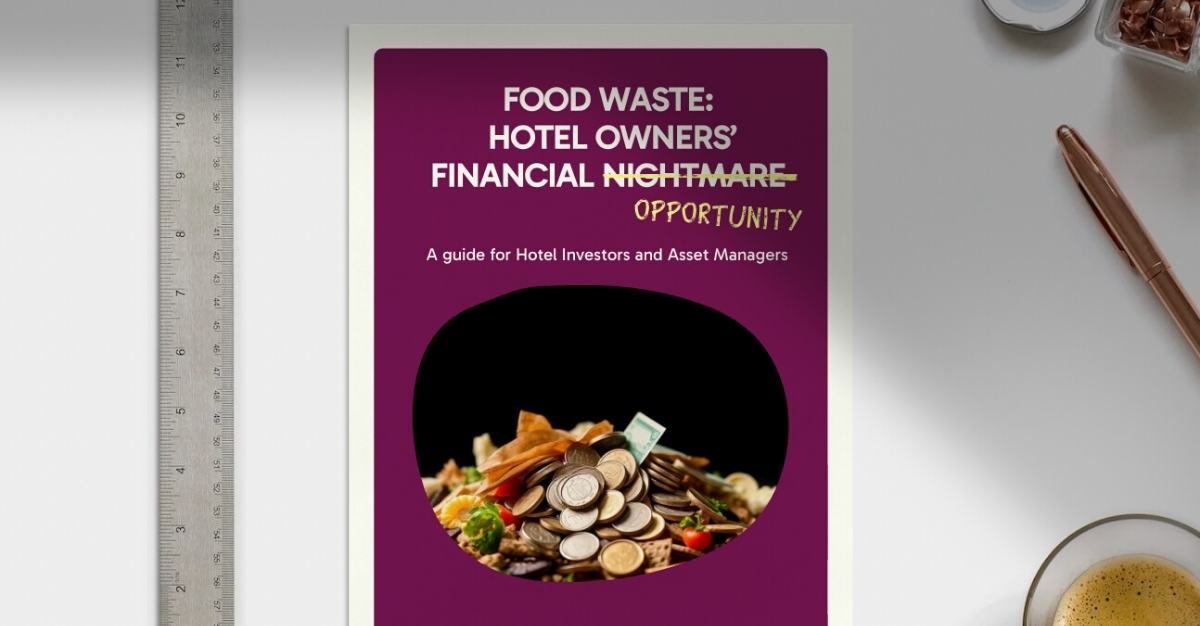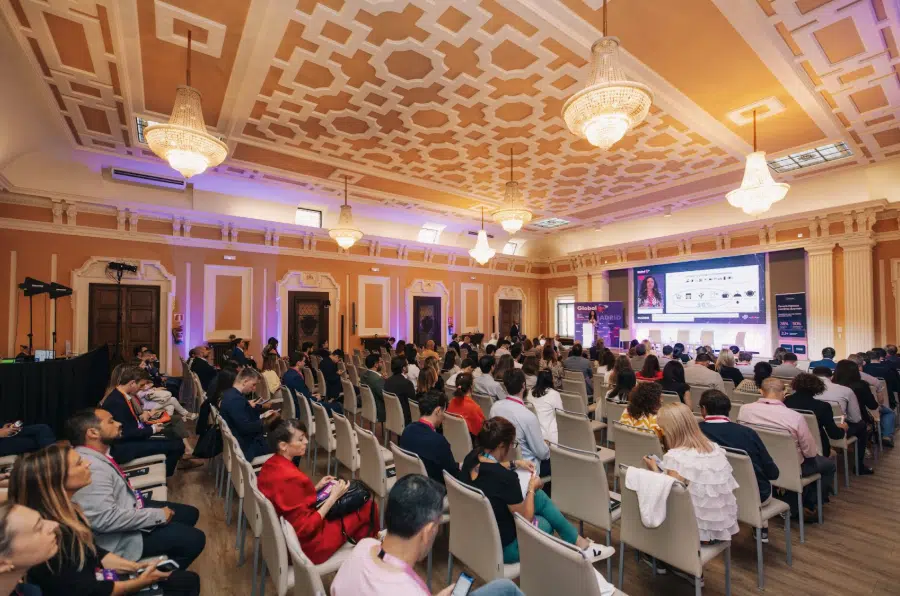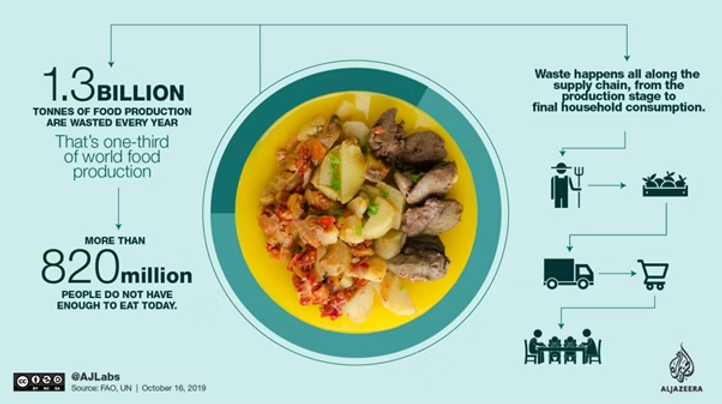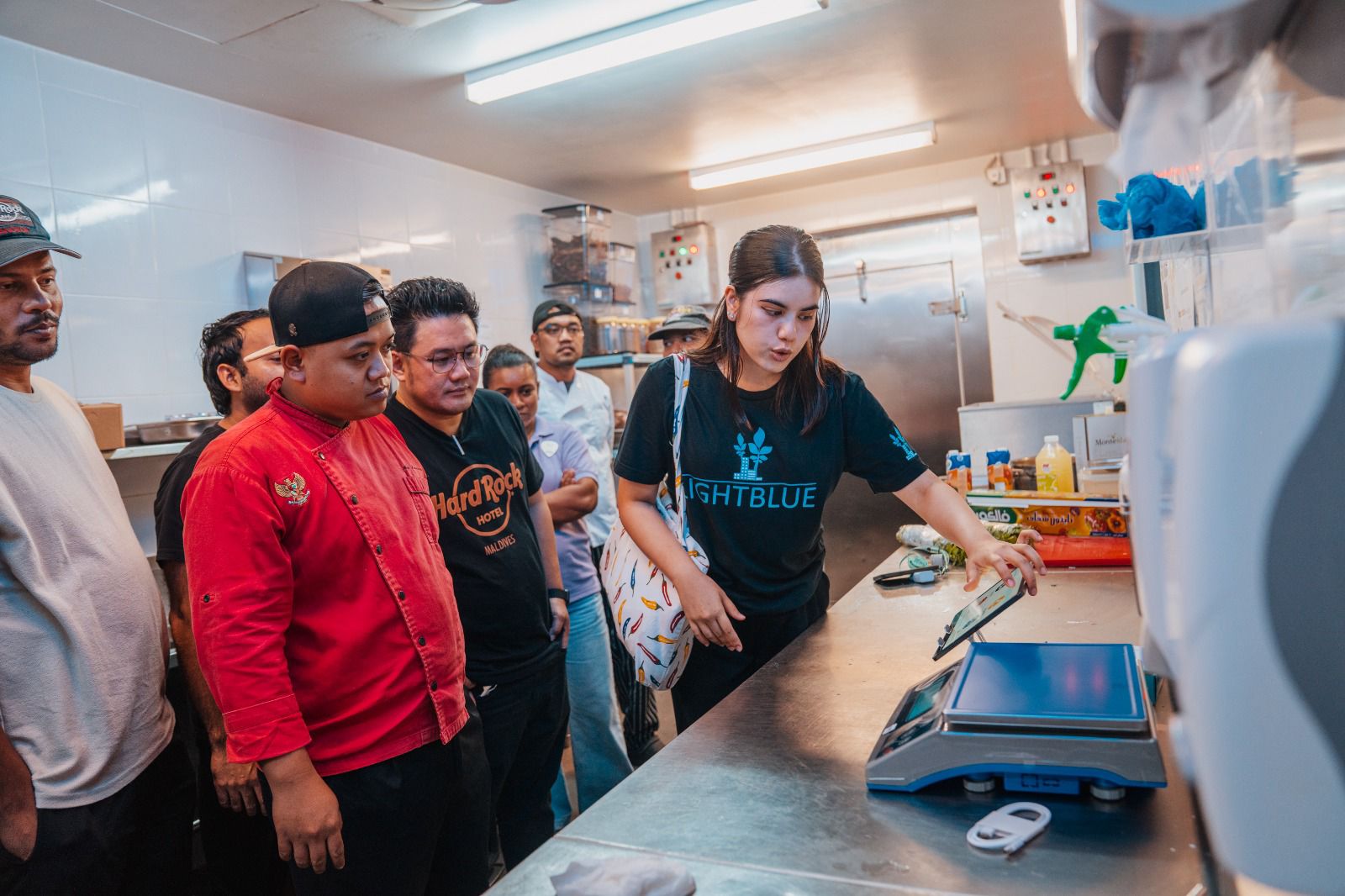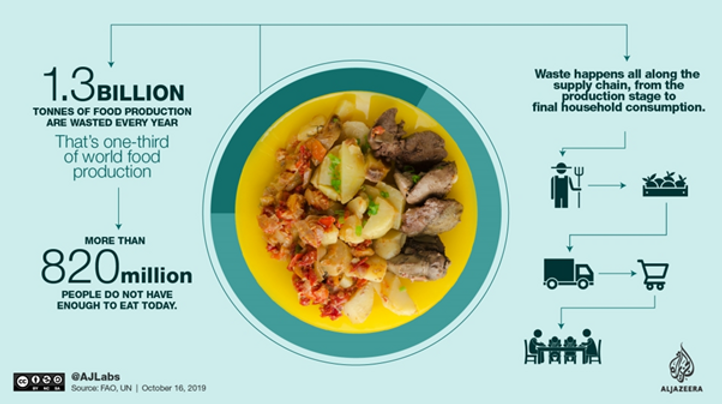
Image from FAO, UN
Picture this: a hotel buffet with trays of food replaced before they are empty, while millions of people face hunger. This is the reality. Every year, large amounts of edible food never reach a plate, wasting resources and contributing to climate challenges.
What if the real solution isn’t more farming, more resources, or more land? What if simply saving the food we already produce could end hunger as we know it?
I. The Magnitude of Food Waste
Food waste is a global epidemic that undermines efforts to address hunger, climate change, and economic inequality. According to the Food and Agriculture Organization (FAO), approximately 1.3 billion tonnes of food is wasted globally every year.
With estimates suggesting up to 40% of all food produced ends up wasted, the implications are profound. This wasted food could feed 2 billion people, more than twice the number of those currently suffering from chronic hunger. The challenge lies not only in reducing this waste but in rethinking our food production and consumption patterns.
II. Where Food Waste Occurs
Food waste permeates every stage of the supply chain, with significant losses occurring long before food reaches consumers. Globally, around 13.2% of food produced is lost between harvest and retail due to reasons like inadequate storage, strict cosmetic standards, logistical inefficiencies, and overstocking.
However, the hospitality sector stands out as a critical hotspot, driven by oversized portions, overproduction, and consumer behavior. This sector’s waste is particularly alarming, as it occurs alongside rising consumer demand for dining out, a disconnect that demands urgent operational reforms, smarter inventory systems, and partnerships with food recovery organizations. Addressing hospitality waste alone could redirect millions of tonnes of food to those in need while slashing costs and carbon footprints.
For businesses, reducing waste isn’t just ethical, it is financially strategic. Tools like AI-driven demand forecasting, dynamic portion control, and surplus redistribution platforms can help in cutting waste, transforming both profitability and social impact. The hospitality industry’s role in this crisis is pivotal, their solutions could set a blueprint for systemic change.
III. The Hunger Paradox

As mentioned previously, while billions of tonnes of food are wasted annually, approximately 850 million people face chronic hunger and malnutrition. This disparity is not just a failure of distribution but also a reflection of our global food system's inefficiencies.
The paradox becomes even more pronounced in the wake of COVID-19, which has exacerbated food insecurity and highlighted the fragility of our food supply chains. Addressing this issue requires a concerted effort to not only produce but also distribute food more effectively.
IV. The Societal Costs of Malnutrition
Malnutrition, including both undernutrition and obesity, poses significant societal challenges. The healthcare costs associated with obesity and related diseases are staggering, impacting not just individual well-being but also economic productivity and social stability. This dual burden of malnutrition calls for an integrated approach to food policy that promotes health and sustainability.
V. Towards an Efficient and Equitable Food System
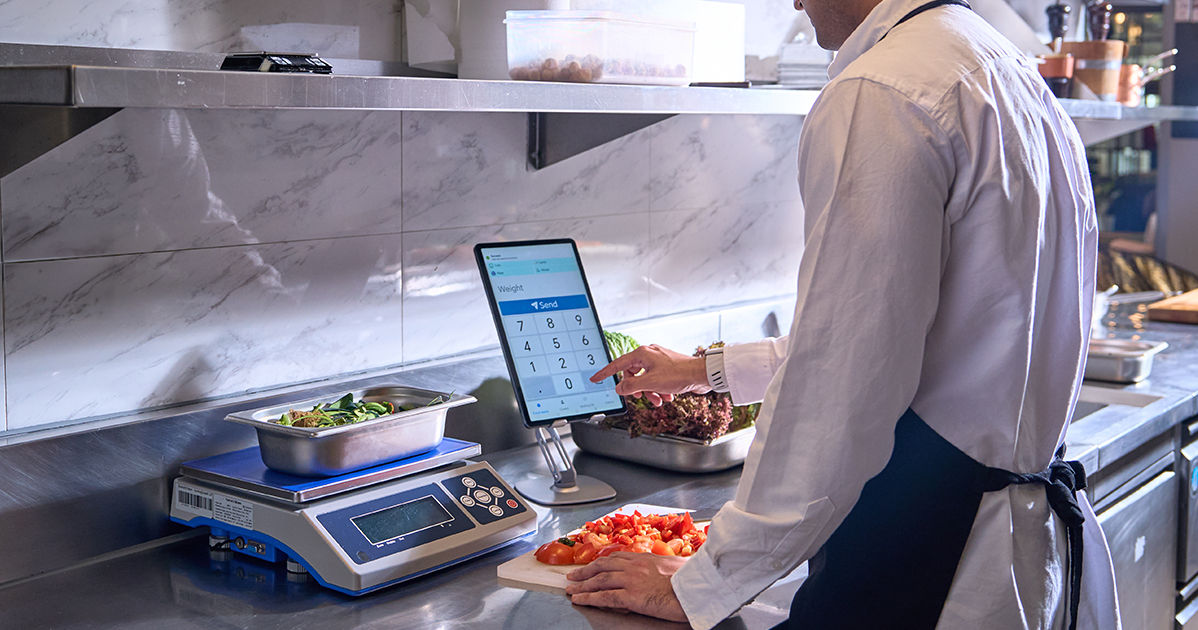
Image from LightBlue, showcasing the use of FIT in a kitchen
The question at the heart of the food waste paradox is not whether we can produce enough food, but whether we can ensure its efficient distribution and utilization. Reducing food waste, improving access to nutritious food, and enhancing the sustainability of food systems are critical steps towards this goal. By reimagining our approach to food production and consumption, we can forge a path towards a more equitable and sustainable future.
There is a solution, and LightBlue is proving it. For over a decade, our UN-awarded team has turned the tide on food waste by blending agile technology, human-centric training, and actionable data. With the FIT App, kitchens across 30+ countries, from Marriott to Michelin-starred restaurants, track waste in real time, slash costs by 5% per cover, and reduce food waste by 35% on average.
The PLEDGE on Food Waste Certification redefines standards, helping businesses like Hyatt and Accor save millions while embedding sustainability into their DNA. When Grand Hyatt Singapore cut waste with LightBlue, they saved SGD 130,000, proof that ethical action drives profit. By empowering teams with scalable training and closing the loop between surplus and scarcity, we’ve shown it’s possible to align planetary health with business growth.
The systems exist. The results are measurable and the time to act is now.
How to Begin Reducing Food Waste
Here are three practical measures hospitality operators can adopt:
Measure and Monitor
Use tracking systems to understand where and why waste occurs. Data provides the basis for effective change.
Adjust Portions and Menus
Analyze guest preferences to optimize portion sizes and avoid overproduction while maintaining service quality.
Use Technology and Data
Apply forecasting tools and food waste tracking applications to support better planning and inventory control.
VI. Talk to LightBlue About Food Waste Solutions
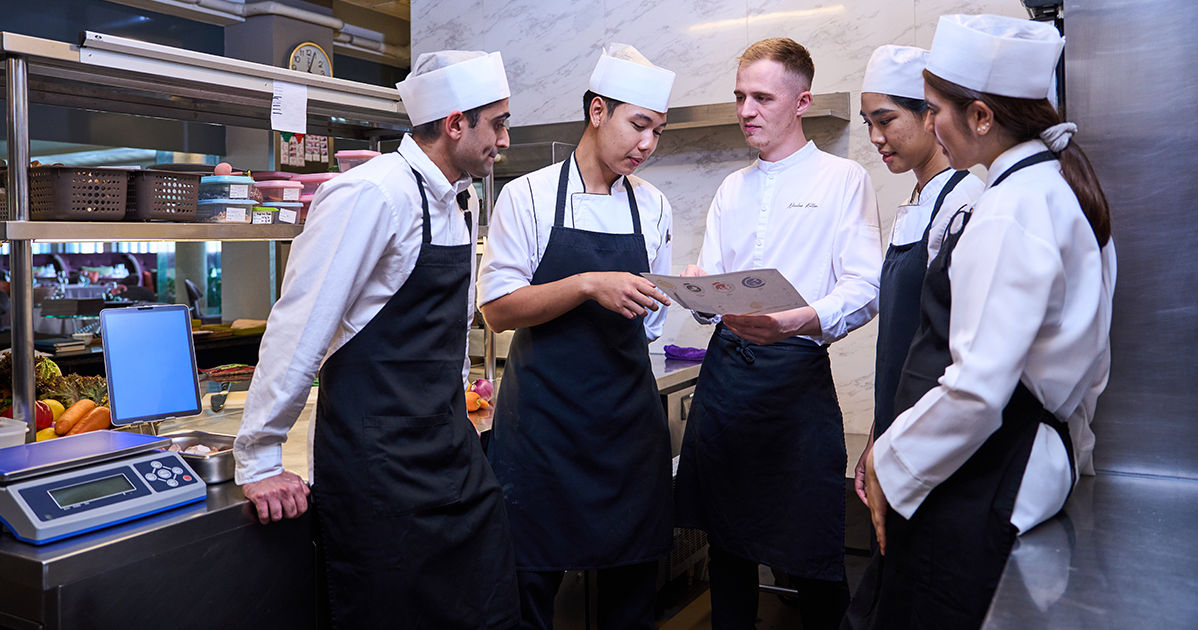
Talk to LightBlue about the full menu of food waste solutions. From kitchen tech to hands-on training that drives real results.
Are you looking for solutions to effectively pursue Zero-Waste? LightBlue offers a full arsenal of solutions designed to reduce food waste and optimize operations:
- FIT Food Waste Tech – Track, measure, and reduce kitchen waste with the surprisingly affordable, scalable solution available on iOS (AppStore) and Android (Google Play).
- The PLEDGE on Food Waste Certification – Showcase your commitment to responsible food practices and meet global sustainability standards
- LightBlue Learning Online Course – Equip yourself with the actionable insights for your ongoing or upcoming careers in the changing landscape towards sustainability.
Whether you’re just starting to pilot a food waste reduction program or scaling up an enterprise‑wide initiative, our tools transform daily kitchen practices into measurable impact.
👉 Get started today by visiting our Website Page or emailing us at contact@lightblueconsulting.com



